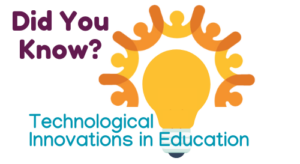One Student’s Perspective on How ChatGPT Is Revolutionizing Education


 Education is a continuum, informed and shaped as students progress through the stages. The preschoolers we nurture today are the high school students of tomorrow, making it vital to anticipate what they will be encountering in the schools of the future.
Education is a continuum, informed and shaped as students progress through the stages. The preschoolers we nurture today are the high school students of tomorrow, making it vital to anticipate what they will be encountering in the schools of the future.
As an organization with a strong interest in early childhood development, Childhood Education International appreciates the importance of understanding the advancements that will shape students’ learning experiences at all stages, in order to best prepare and support them in both the present and the future.
From within this context, we interviewed a U.S. high school student (who preferred to remain anonymous) about her experiences with ChatGPT, a cutting-edge artificial intelligence (AI) tool. The conversation covered various aspects of the technology, including its initial appeal, its potential impact on passive learning, and how students like her are using it to their advantage.
We hope to provoke thoughtful reflection on how educators’ work in early childhood is affected by and will affect their students’ future learning, while offering a glimpse into the emerging intersections of technology and education.
Q: When were you first introduced to ChatGPT?
A: I was first introduced to ChatGPT in school when one of my friends mentioned a site that could generate essays for you. At first, I thought it was just for generating essays, but later I realized it had more applications.
Q: What was your first reaction to ChatGPT?
A: I was super excited! [I was happy to think that] I wouldn’t have to stress about my assignments so much, and I could just ask a question, and boom, my work would be done in no time.
Q: How did your school react to ChatGPT?
A: Teachers started getting worried about it, especially those who assigned more written work, like English or psychology. Our school blocked the site on our Chromebooks, but one of the students in our class is a really smart and kind person [who knew how to get access]. The children stood in line and asked him to give them access.
Q: Do you think using ChatGPT makes you a passive learner?
A: I think it can increase passive learning as opposed to critical thinking if students completely rely on it. It takes away from the struggle to at least be able to come up with a great title, outline, or research question. I understand that going through that struggle is important, I guess, but I do still put effort into my work, just a different kind of effort.
Q: Do you think AI tools like ChatGPT should be allowed in schools, or should there be limits?
A: I think there should be some limits, but they shouldn’t be banned completely. AI tools can be really helpful, but we need to learn how to use them responsibly. If schools teach us the right way to use these tools, we can benefit from them without losing our critical thinking skills.
Q: Have you ever used ChatGPT to help you with subjects other than writing assignments, like math or science?
A: Yes. I use it all the time to help explain tricky math or science questions to me. [I use it] like a tutor. It is easier to ask than Google. I can even tell it to explain it to me like I was a 6th grader or something.
This interview provides valuable insights into the mindset of students and their experiences with AI tools like ChatGPT. We must consider the potential risks and benefits associated with integrating these technologies into our educational systems. While AI can be an asset in certain areas, overreliance on it may lead to a decrease in critical thinking skills and an increase in passive learning.
In order to find the right balance, educators should encourage students to use AI tools responsibly (rather than trying to stop them) and ensure that students maintain active engagement in their learning. This may involve providing training on how to use AI tools effectively, setting boundaries for their use, and promoting a culture of critical thinking and active learning in the classroom.
Encourage responsible use of AI tools
As we continue to explore the role of AI in education, it is essential to engage in open dialogue with students, educators, families, and policymakers to create a more inclusive and effective learning environment for all.
Don’t forget to take our quick survey to help us better understand the impact of AI on learning and teaching. Your input can make a difference in shaping the future of education. Click the link below to participate in the survey now!